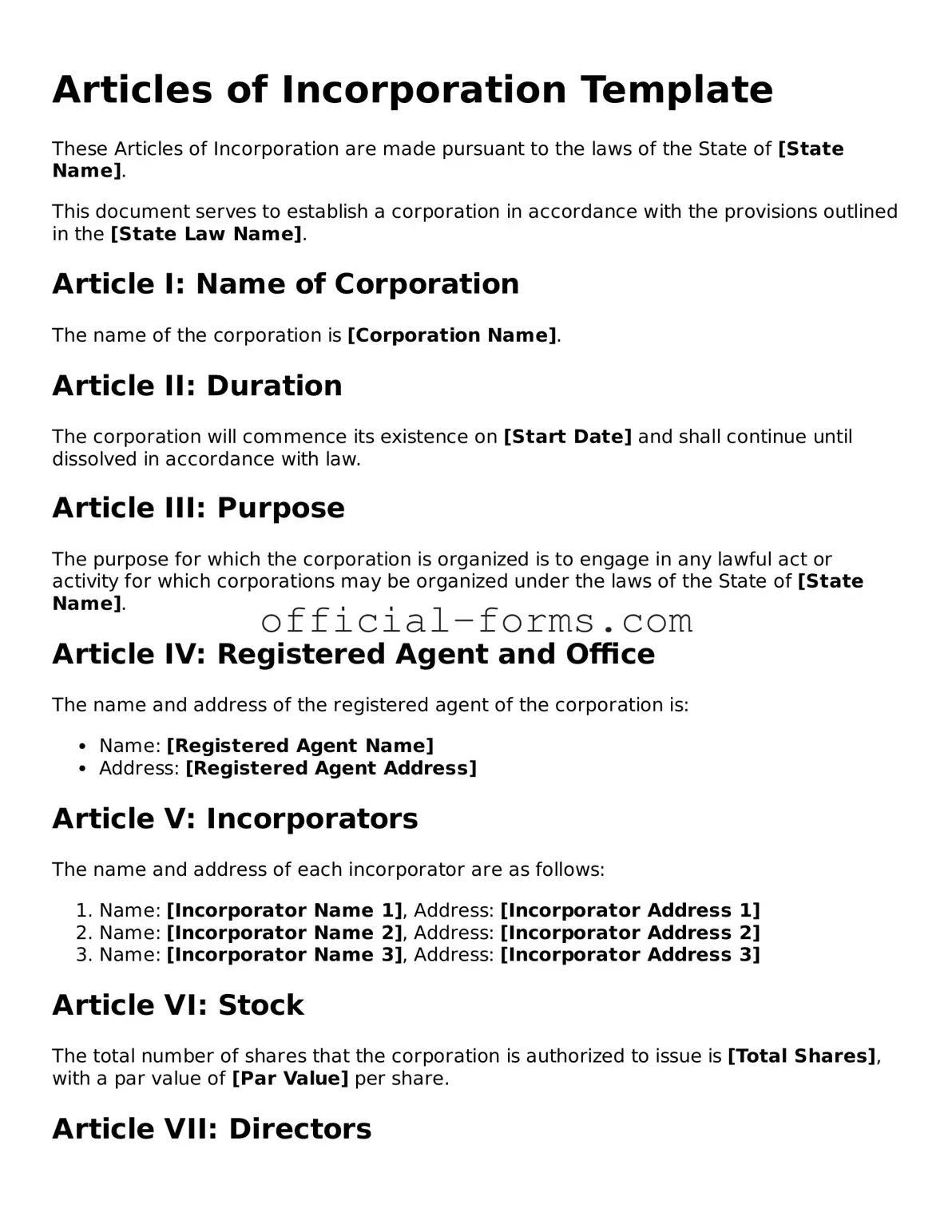When individuals embark on the journey of incorporating a business, the Articles of Incorporation form becomes a pivotal document. However, many make common mistakes that can lead to delays or complications. Understanding these pitfalls can save time and ensure a smoother process.
One frequent error is incomplete information. It is essential to provide all required details, such as the name of the corporation, the purpose of the business, and the registered agent's information. Omitting even a single piece of information can result in rejection of the application.
Another mistake involves choosing an inappropriate name for the corporation. The name must not only reflect the business's identity but also comply with state regulations. Many fail to check for existing trademarks or similar names, leading to potential legal disputes down the line.
People often overlook the importance of the registered agent. This individual or entity acts as the official point of contact for legal documents. Selecting someone who is unreliable or fails to maintain a consistent presence can create significant issues for the corporation.
Additionally, neglecting to specify the number of shares can be problematic. The Articles of Incorporation should clearly state how many shares the corporation is authorized to issue. Failure to do so can limit the company’s ability to raise capital and attract investors.
Another common misstep is not adhering to state-specific requirements. Each state has its own regulations governing the incorporation process. Ignoring these can lead to delays, fines, or even the inability to operate legally.
Finally, many individuals forget to review the document thoroughly before submission. Typos, grammatical errors, or inconsistencies can undermine the professionalism of the application and may lead to complications. Taking the time to proofread can prevent unnecessary setbacks.
Incorporating a business is an important step that requires careful attention to detail. By avoiding these common mistakes, individuals can enhance their chances of a successful incorporation process and lay a solid foundation for their business ventures.
